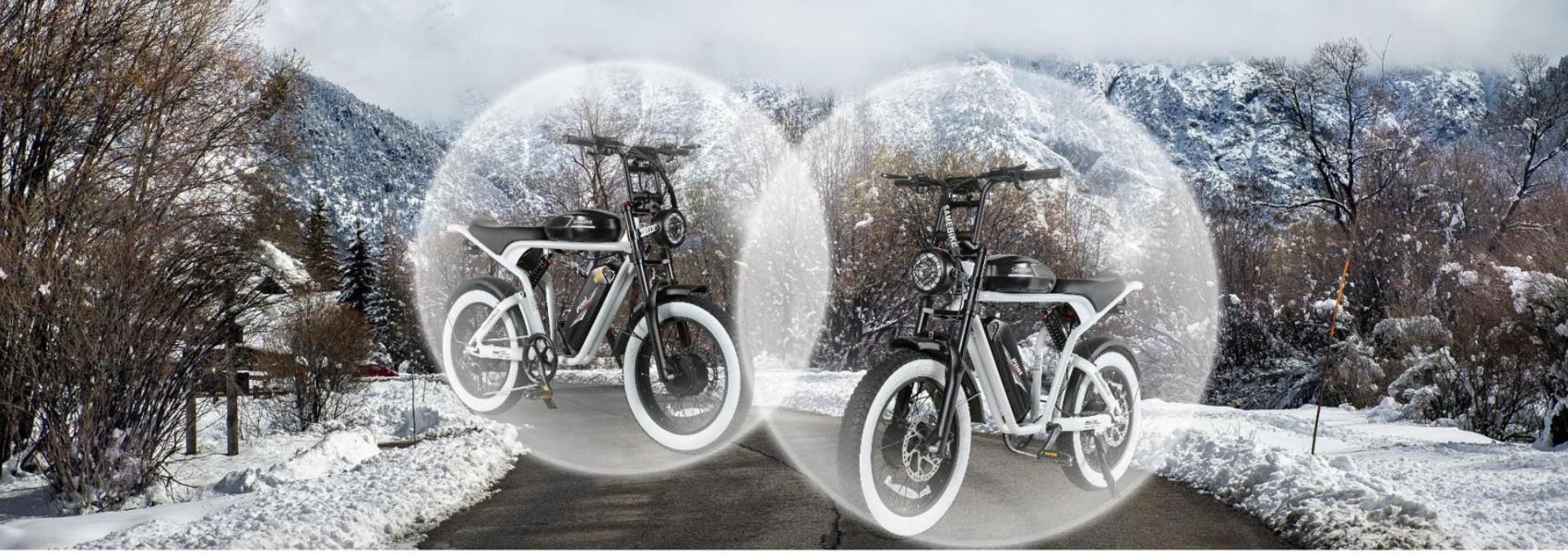
Winter maintenance and riding safety
Tips for maintaining ebikes in winter
As winter approaches, ebikes face many challenges caused by the sudden drop in temperature. In order to ensure daily riding safety and extend the life of electric bicycles, it is necessary for riders to master some winter maintenance and safe riding skills.
Battery maintenance
- Charge in time
When the weather temperature drops suddenly, the activity of various substances in the battery will decrease, and the power storage capacity will also become worse. If you leave it unused for a long time, make sure to replenish the battery at least once a month to avoid battery loss of power. When riding, do not charge the battery until it is completely exhausted. Charge it when there is about 20% of the battery remaining to keep the battery in a full state.
- Control vehicle speed
Of course, in addition to the impact of temperature, the bad habits of some ebike owners will also reduce battery performance. Many users like to "racing" when riding, which requires the battery to release more power to support it. Therefore, it is recommended that car owners maintain a steady speed in cold temperatures and try to avoid sudden acceleration or sudden braking during riding. Avoid starting too fast and suddenly releasing large current. Instead, perform 'warm-up' in boost mode first.
- Battery storage
Ebikes will slowly discharge even if they are not used. In cold weather, battery discharge will be more serious. In winter, if the ebike is parked in the open air for several days without use, the battery should be removed and stored in a place sheltered from wind and rain to prevent the battery from freezing and damage, or causing battery loss.
- Charging temperature
At low temperatures, charging is slower because the battery needs to be "heated" to charge. When the battery cell is lower than a certain temperature, the system will first heat the battery cell. When its temperature reaches above a certain temperature, it will start charging the battery. It is recommended that owners choose a relatively warm environment when charging batteries in winter, or try to charge during the day when the temperature is higher.
Charger maintenance
- Correct usage. When charging, plug in the battery plug first, then plug in the power plug. After charging, first pull out the power plug, then the battery plug; 2. Avoid frequent vibrations of the charger.Do not carry the charger with you in the ebiketo strengthen the protection of the charger and extend the service life of the charger. Vibrations and bumps during driving will cause many components inside the charger to be damaged and fall off.
Motor maintenance
- Do not modify the motor without permission.The motor needs to match the battery and controller, otherwise the lifespan will be damaged. 2. Do not use brakes when riding, otherwise the motor will be stressed and heat up, causing the magnet to demagnetize, which will seriously shorten the cruising range.
Controller maintenance
- Try to avoid being exposed to rain for a long time.Once water enters, it will damage the controller. For safety reasons, try to avoid riding in places with water; 2. Avoid frequent braking and hard braking, which will damage the controller components over time and affect riding safety; 3. Avoid long-term load use,otherwise it may cause The internal components of the controller are aging, shortening the service life of the electric vehicle.
In addition, when riding an electric bicycle in winter, pay special attention to check whether the tire pressure is sufficient before going out. It is better to deflate the tire to 2/3 of the usual amount. Increasing the contact area between the wheel and the ground can prevent slipping. When charging, you must use a matching dedicated charger. Because the battery formula and process are different, the technical requirements for the charger are also different. Do not mix chargers. Lower the seat as much as possible, lower the center of gravity, and keep a distance of more than 3 meters from the vehicle in front to prevent the vehicle in front from slipping and tripping you. Do not brake suddenly, otherwise the wheels will slip and lose balance. Try to avoid sharp turns; the larger the turning radius within the permitted range of the road, the safer it is. Do not compete with motor vehicles to prevent being hit by a motor vehicle that is slipping. When encountering snowy ground and uneven ice surfaces, It's better to push it away.
